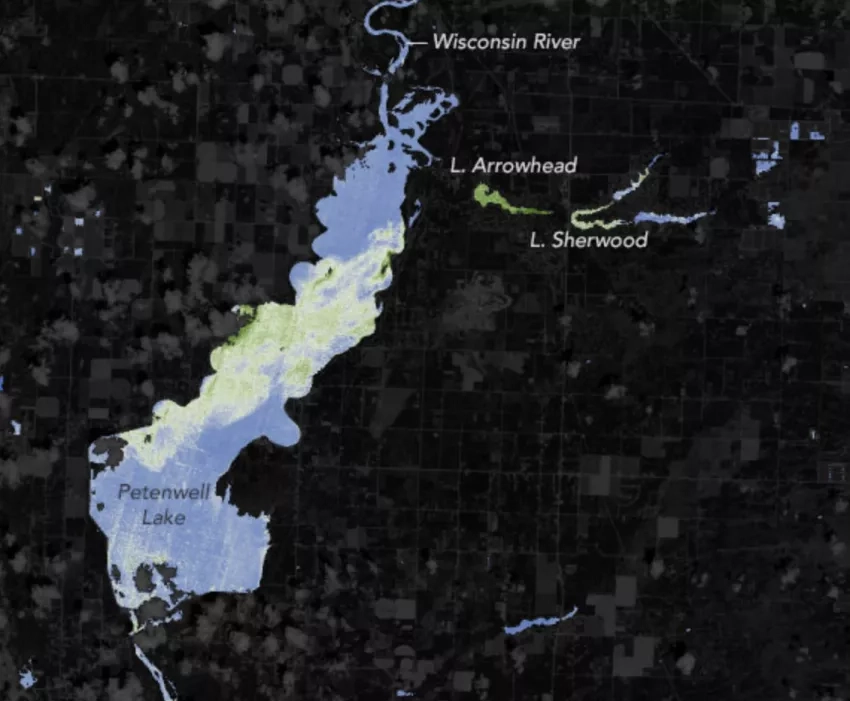Harmful algal blooms can be serious public health hazards. Phytoplankton and cyanobacteria occur naturally in bodies of water across the U.S., but when these toxin-producing organisms reach high enough concentrations, they can sicken people and pets, contaminate drinking water, and force closures of boating and swimming sites. For a state with as many lakes as Wisconsin, pinpointing these blooms can be a challenge.
“With 15,000 lakes, can you visit them all? And depending on when you visit, you might just miss a bloom,” said Donalea Dinsmore of the Wisconsin Department of Natural Resources. “It can be a really complicated and expensive monitoring program if you go in blind.”
In 2019, the multi-agency Cyanobacteria Assessment Network (CyAN) released an app intended to alert water managers like Dinsmore and members of the public when and where a bloom could be occurring. CyAN involves researchers from NASA, the Environmental Protection Agency (EPA), the U.S. Geological Survey (USGS), and the National Oceanic and Atmospheric Administration (NOAA).
The CyAN app relies heavily on water color changes as observed by satellites. NASA has been observing the color of the ocean surface to study phytoplankton populations since the 1970s. But newer instruments like the Moderate Resolution Imaging Spectroradiometer (MODIS) on NASA’s Terra and Aqua satellites can now help distinguish conditions in smaller bodies of water, such as larger inland lakes and reservoirs. Meanwhile, instruments on the NASA/USGS Landsat satellites and the European Space Agency’s Sentinel-2 and 3 satellites can detect the various spectral signatures of algae. Drawing from this variety of sources, NASA supercomputers produce weekly reports on the thousands of lakes, reservoirs, and ponds in the United States.
More information available at the Earth Observatory story, NASA Helps Warn of Harmful Algae in Lakes, Reservoirs.
This story is part of our Space for U.S. collection.




